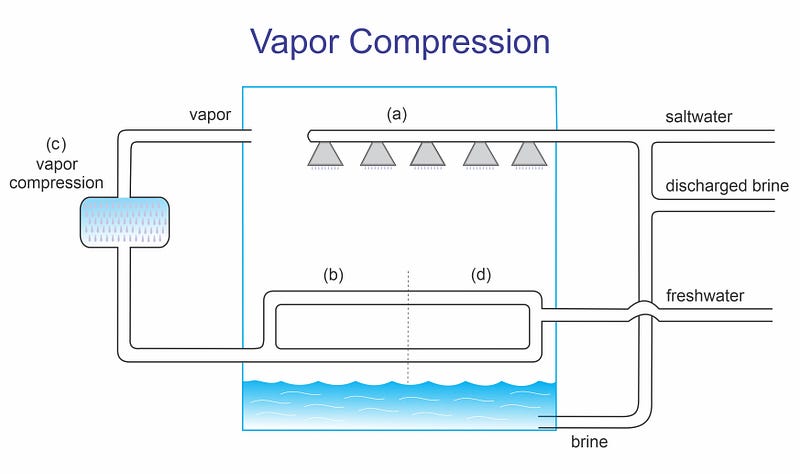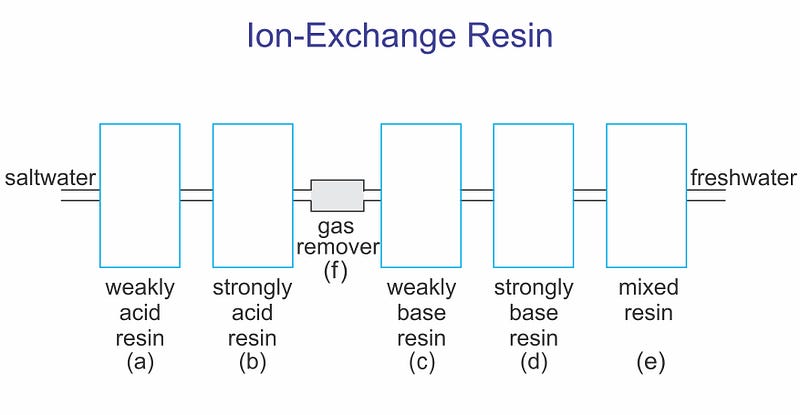Innovative Technologies to Alleviate Water Scarcity Conflicts
Written on
Chapter 1: Understanding Water Scarcity
As climate change intensifies, many regions around the globe are facing severe freshwater shortages. Countries such as Qatar, Israel, India, Pakistan, Iran, Saudi Arabia, and the United Arab Emirates are traditionally known for their water stress. However, nations in southern Europe are increasingly encountering similar issues, prompting governments to urge citizens to minimize water use. The aim is to protect lives by curbing extreme water shortages and potential conflicts over drinking water.
While tackling climate change is a long-term solution, the growing demand for freshwater, driven by population growth, necessitates the exploration of desalination technologies. Desalination refers to the process of transforming saltwater into drinkable freshwater.
This article highlights several desalination technologies and emphasizes the importance of utilizing renewable energy sources like wind, solar, or wave energy to make these processes sustainable.
Section 1.1: Mechanical Desalination Methods
Mechanical energy is harnessed to convert saltwater into drinkable water through various technologies.
Reverse Osmosis
Reverse Osmosis is the most widely utilized method, accounting for about 68.7% of desalination processes. In this technology, saltwater is directed through semi-permeable membranes, allowing only water molecules to pass while retaining salts. To prevent membrane clogging, thorough filtration of the water is essential. This video illustrates the osmosis and reverse osmosis processes involved in desalination (0:52–1:50):
Nanofiltration
Nanofiltration operates similarly to Reverse Osmosis but features slightly larger membrane pores. This enables the passage of more molecules, such as chloride ions, which are excluded in Reverse Osmosis. Despite the difference, this method is effective with a 29% reduction in energy consumption.
Mechanical Vapor Compression
Mechanical Vapor Compression utilizes a chamber where saltwater is heated into vapor using energy from compressed vapor. The condensed vapor is then collected as freshwater, maximizing energy efficiency by reusing leftover heat.
Hydration
In Hydration, saltwater is introduced into a reactor where it combines with propane and carbon dioxide, forming solids under specific conditions. These solids are then decomposed into freshwater and gas, with the gas being reused.
Secondary Refrigerant Freezing
This method involves freezing saltwater in one tank while using heat transfer to melt ice in another. The process results in a freshwater yield from the melted ice.

Section 1.2: Thermal Desalination Techniques
Thermal energy, often sourced from solar or geothermal systems, is also employed in desalination.
Multi-Stage Flash
This widely used technique (17.6%) involves heating saltwater as it flows through multiple chambers, leading to evaporation and subsequent condensation, capturing freshwater.
Multi-Effect Distillation
In this method, steam flows through low-pressure chambers where saltwater is sprinkled, leading to condensation and separation of freshwater.
Thermal Vapor Compression
Similar to mechanical vapor compression, this technology uses steam from power plants for thermal compression.
Membrane Distillation
This technique allows water vapor to pass through a membrane, though it is more efficient when paired with other plants that produce residual heat.
Solar Still Distillation
Utilizing sunlight, this method heats water, causing it to evaporate and then condense on a glass surface for collection as freshwater.
Humidification—Dehumidification
In this process, heated saltwater vaporizes in one chamber while cooling air in a second chamber condenses the vapor into freshwater.
Section 1.3: Electrical and Chemical Energy in Desalination
Electrical energy technologies, such as Electrodialysis and Capacitive De-ionization, leverage the movement of charged particles to facilitate desalination.
Electrodialysis
In this approach, saltwater is passed between charged plates, causing ions to migrate and be captured as freshwater.
Capacitive De-ionization
This method operates similarly to Electrodialysis but without membranes, utilizing voltage reversal to facilitate ion exchange.
Chemical Energy
The Ion-Exchange Resin method involves passing saltwater through chambers containing resin that chemically interacts with the ions, effectively removing them from the water.

Conclusion: The Path Forward
Innovative desalination technologies harness mechanical, thermal, electrical, and chemical energy to convert saltwater into freshwater. However, the energy-intensive nature of these processes underscores the need for sustainable practices.
Practical Steps to Reduce Water Demand
To mitigate the necessity for desalination, individuals can adopt various water-saving practices, such as:
- Utilizing bath water for toilet flushing.
- Opting for showers over baths.
- Shortening shower durations.
- Reusing dishware and utensils.
- Capturing rainwater for irrigation.
Engagement in water conservation efforts can contribute significantly to alleviating water scarcity. What strategies do you suggest? Feel free to share your ideas in the comments.
Credit
This article draws from:
Curto, D., Franzitta, V., & Guercio, A. (2021). A review of the water desalination technologies. Applied Sciences, 11(2), 670.